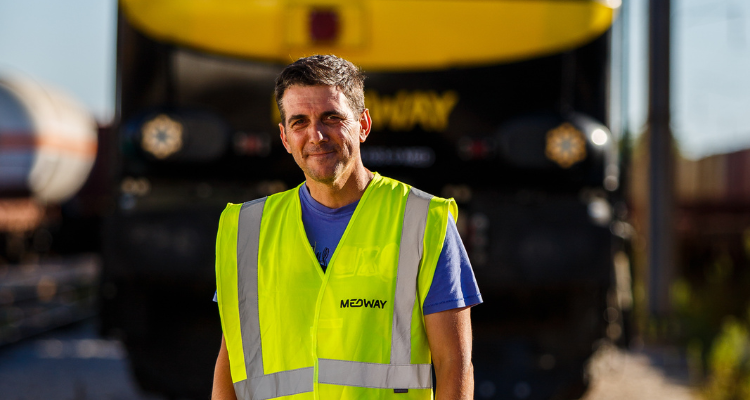
TRAIN DRIVER LICENCE AND DIPLOMANext course February 6, 2023The train driver's license and diploma course is for those seeking specialized training to be able to drive railroad vehicles.
we have newsOur tenth promotion will have a guaranteed contracting commitment with MEDWAY Operador Ferroviario de Mercadorias in Spain. And, once the registration period is closed, if you complete the registration process in advance before December 9 of 2022, you will receive a 5% discount on the price of the course.
ProgramThe minimum educational load required for a driver's license and diploma must be equivalent to 1150 hours, of which 650 hours correspond to theoretical training and 500 hours to practical training, of which at least 300 hours correspond to other practices, third party practice and supervised driving practice (simulator), and 216 hours correspond to actual driving practice on railway vehicles. The training program is structured in two modules: - Module I: Theoretical training - Module II: Practical training
MODULE I. Theoretical training
As part of the theoretical training there will be a block of revision and resolution of doubts after the completion of the theoretical and practical training and before the corresponding test to obtain the title that will be carried out by the ESFA. This PFCNLD_MP and MAD_LICENCIA Y DIPLOMA DE CONDUCER_01_1221 training will take place for the two opportunities established by the regulations. Therefore, if the test is not passed in the first round, a second review will be developed before the second opportunity. These refresher blocks will consist of a total of 36 to 42 hours, of which 30 hours will be theoretical training (mainly distance learning) during the usual theoretical training schedule and six or 12 hours for AESF-type mock tests to check the level and for the center to make a decision on access to the official test. The hours will be distributed: - ROAD SAFETY REGULATIONS (RCF): 18 hours of content of greater difficulty and relevance, as well as possible regulatory changes that occur after the end of the theoretical training and require the corresponding explanation.
- REST OF MATERIALS: 12 hours of the technical blocks of electric engine, diesel and braking material. - AESF TEST - SIMULATION TEST: 6-12 hours of performance, correction and clarification of doubts on 1 or 2 simulated tests for access to the official AESF test.
practical training
(*) The distribution of hours of practical training may vary, within the minimum indicated, depending on the agreements established with the railway undertaking with which they are conducted.
METHODOLOGYTheoretical training will be conducted through classroom and/or distance learning, with oral presentation using audiovisual media and applying an active methodology that allows the student to participate in the learning process, as well as to learn and draw conclusions. The learning of theoretical content will happen with the resolution and proposal of practical cases and the resolution of questions, all aimed at consolidating what has been explained so that students can check the usefulness of what they are learning and acquire skills to face the development of the practical module. By means of a content manager, multimedia content will be provided, review classes of the material already seen, if deemed appropriate, recordings of the sessions to view them again, additional documentation complementary to the different subjects and any information of interest to complement the content that tutors and trainers deem appropriate. For distance training, the daily duration of the training will be five hours in the first sessions, and may reach a maximum of six hours (eight hours in the case of face-to-face training), depending on the experience acquired and the assessment of trainers and students. Short breaks (10 minutes) will be taken approximately every hour to avoid a decrease in attention and reduce visual exhaustion in front of the screen. For the development of the practical module, three methodologies may be established:
The hours carried out for methodologies A and B shall be counted in any case as hours of the previously mentioned "Other driving practices". |
By using freight transport, you will reduce CO2 eq emissions in:
against the same transport by road.
This is your contribution to saving the planet!